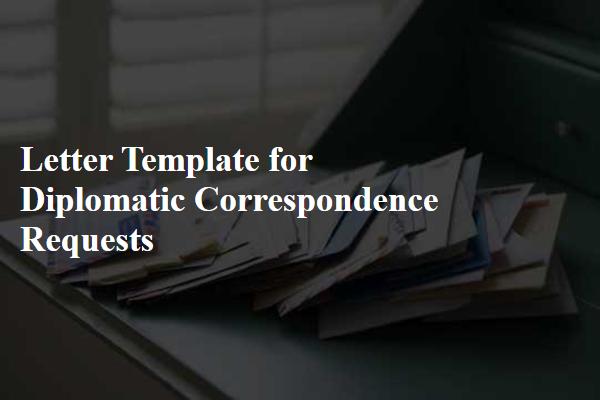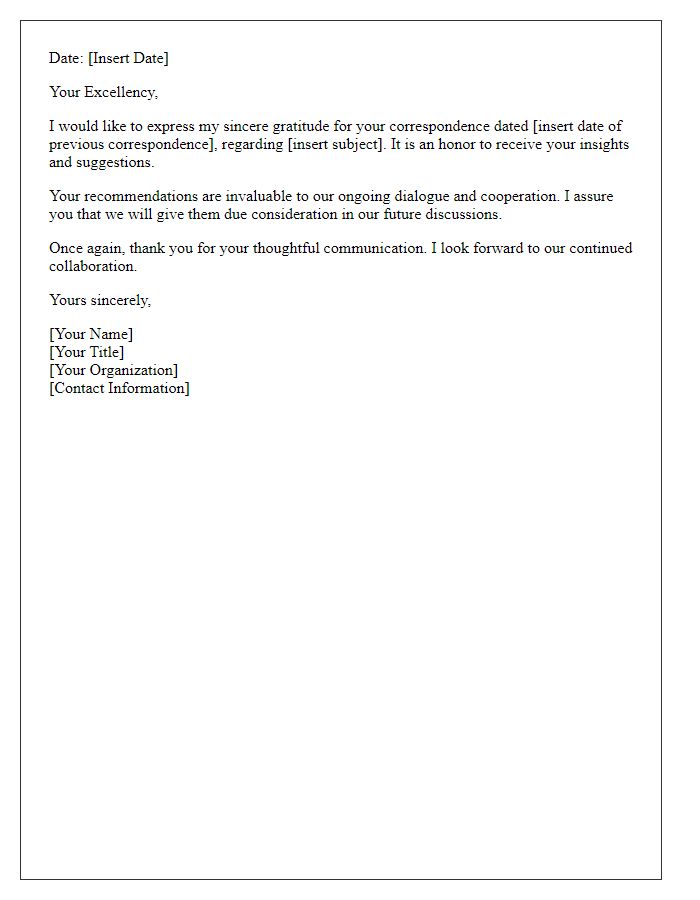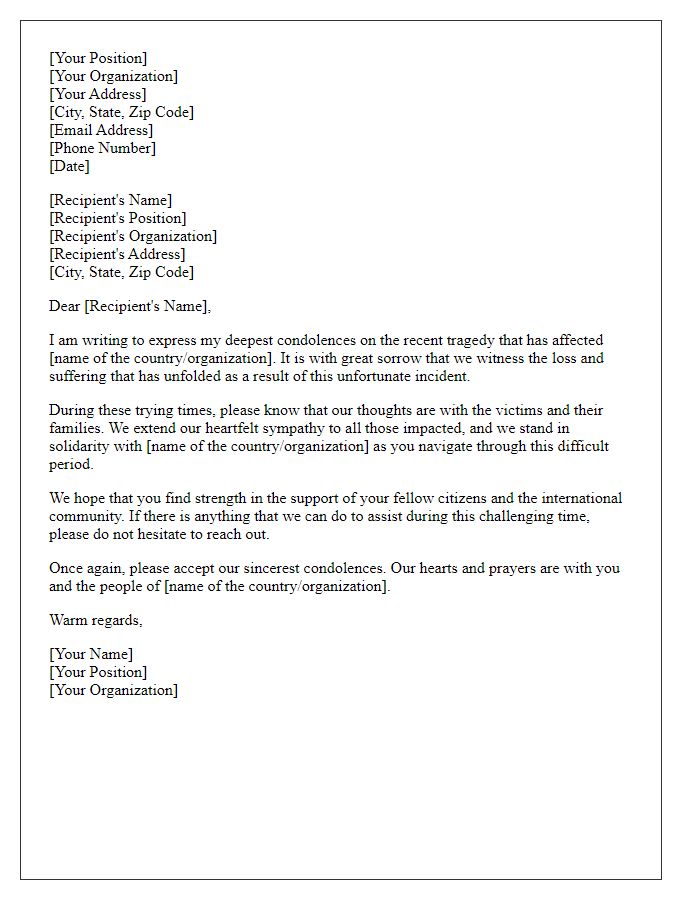In the world of diplomacy, effective communication is key to fostering strong relationships and addressing complex issues. Crafting a well-structured letter is essential, whether you're reaching out to a foreign government or establishing dialogue with international organizations. This letter template serves as your guide, helping you convey your message with clarity and professionalism. Ready to dive into the nuances of diplomatic correspondence? Read on to explore our essential tips and tailor the perfect request!

Formal Salutation and Address
In diplomatic correspondence, the formal salutation typically addresses the recipient by their official title, reflecting respect and formality. For example, addressing an ambassador requires using "His Excellency" followed by the full name and title, such as "His Excellency John Doe, Ambassador of the Republic of XYZ." The address section should include the full postal address of the diplomatic mission, which may encompass elements such as "Embassy of the Republic of XYZ," followed by the street address, city, and postal code. Precision in this format is crucial for ensuring the correspondence reaches the intended recipient without delay.
Clear Purpose Statement
A clear purpose statement articulates the intent of diplomatic correspondence, establishing the context for communication between entities or organizations. Such statements, often crafted for formal letters, ensure that recipients understand the primary objective of the correspondence within the framework of international relations. Clarity is crucial; for instance, when requesting a meeting to discuss trade agreements, an effective purpose statement might highlight the importance of economic collaboration between countries like the United States and Japan. A well-defined purpose aids in fostering transparency, ensuring that all parties are aware of expectations and objectives, while promoting constructive dialogue in diplomatic engagements.
Background Information and Context
Diplomatic correspondence requests often require a clear understanding of the context in which they are made. For instance, the request may pertain to ongoing discussions related to international treaties, such as the Paris Agreement from 2015, which aims to mitigate climate change by limiting global warming to below 2 degrees Celsius. Another context might involve bilateral relations between countries, particularly in events like the G7 Summit held in Germany, where global economic policies are deliberated. It is also pertinent to consider the historical background of diplomatic relations, such as the normalization of ties between the United States and Vietnam following decades of conflict, which laid the foundation for current trade agreements. Key elements like the timing of the request, the current political climate, and previous interactions between the involved parties can significantly influence the effectiveness of the correspondence.
Specific Request and Proposed Action
In international relations, diplomatic correspondence plays a crucial role in formal communication between countries. Specific requests, such as financial aid, trade agreements, or military support, must be articulated clearly. Proposed actions could involve official visits to embassies located in capitals, like Washington D.C. or Brussels, to discuss matters directly. Attention to detail in outlining the purpose of the request and the anticipated outcomes fosters mutual understanding, enhances collaboration, and contributes to the resolution of global issues. Following established protocols ensures respect for diplomatic practices, maintaining the integrity of international engagements.
Polite Closing and Contact Information
Polite closing remarks play a crucial role in diplomatic correspondence, fostering goodwill and respect between parties. For instance, "Yours sincerely," conveys earnestness in professional interactions. Diplomatic language emphasizes formal and courteous expressions, reflecting cultural nuances and maintaining diplomatic relationships. Including contact information, such as phone numbers (+1-555-0101), email addresses (info@diplomaticoffice.org), and physical address (123 International Way, City, Country), ensures clarity for future communication and demonstrates accessibility. This attention to detail in closing remarks and contact information greatly enhances the professionalism of diplomatic letters.
Letter Template For Diplomatic Correspondence Requests Samples
Letter template of diplomatic acknowledgment of previous correspondence.













Comments